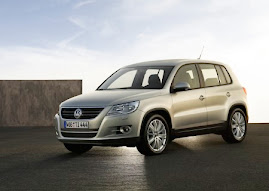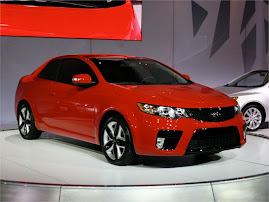
ADVANCEMENT IN DESIGN
Granted, from 50 feet or in a two-dimensional photograph, the Passat engages the eye less than does the splashy "fluidic design" of the Hyundai Sonata, but closer inspection reveals exquisite detailing. Our own expert witness, Tom Gale, gets the ball rolling: "The package provides good accommodation, and like the Audi [A6], what is remarkable is the restraint shown with the handling of the design. Clean, beautiful surfaces have been refined for an engaging result. The upper character line, with its subtle undercut, is an example of the care taken with the stampings throughout." Engineering guru Chris Theodore found the exterior "tastefully executed with really tight shut lines and nice detailing." The result is sort of a time-release appeal that blossoms upon close scrutiny or when hand-washing the vehicle. It's a less flashy design than the Sonata's, but way more cohesive than the Accord's.
There's nothing trendy going on inside, either, which may let it age more gracefully than bolder designs. Gale admits the design "breaks little new ground, but the grain, gloss levels, and material choices are tasteful." He and others criticized the choice to prioritize the dash vents over the multifunction display, the low placement of which looks dated and represents an ergonomic back-step. Ditto the fiddly turn-signal-stalk cruise controls and the entertainment system's lack of a USB port (Bluetooth and an SD card are supported, and there's a 1/8-inch aux jack). But the car's functions can be intuitively controlled without consulting the owners' manual -- something Accord owners may appreciate.
ENGINEERING EXCELLENCE
OK, the engineers among us dislike odd-numbered cylinder counts like this 2.5-liter's, but Theodore grudgingly admitted, "It's the best-tamed VW I-5 application ever. The thrashiness has been masked, and the engine is very quiet. A fine choice for middle America in real-world driving conditions." Your technical director's log reads: "This 2.5 appears to have finally found a good home," with praise for strong launch torque that keeps pace with the competition to 30 mph thanks to short gearing (its 9.0-second 0-60 time trails the competition notably).
Characterizations of the engine note ranged from "moaning" to "unique growl," but the general consensus was that the powertrain integration team earned its kibble. Sure, we wish it were a sprightlier sprinter, but we expect a direct-injected and/or turbocharged four-cylinder replacement to arrive soon.
The turbodiesel found no detractors. "Hands down, my favorite," declared product expert Jim Hall. "This diesel puts the hybrids on the trailer," said Lassa. "Pulls this car around so easily, and gives you 600 plus miles to a tank," added Evans. Pair this clean diesel with "one of the best twin-clutch transmissions in the business," said Theodore, and you've got a green car "without the compromises the mainstream green vehicles impose -- a true technological achievement." And for those who need more power, the compact VR6 teams with that same twin-clutch automatic to deliver class-stomping acceleration to 60 mph in just 5.7 seconds.
EFFICIENCY
It should surprise no one that over the course of 11 mixed-driving loops, our diesel Passat recorded the highest fuel economy stats of this year's finalists at 34.3 mpg. Perhaps more interesting was the base 2.5-liter's fifth-best 26.5 mpg -- that's exactly halfway between the EPA city and highway ratings of 22/31 mpg. That's higher within its EPA-predicted economy range than any other finalist managed, and the second highest was the TDI/DSG at 43 percent of its 30/40-mpg points spread (we didn't run the VR6 on our fuel-economy loops). This bodes exceptionally well for real-world achievability of the Passat's window-sticker numbers. Not penurious enough with the petrol? Opt for the base five-speed manual in the SE to eke out one more highway mpg, or the six-speed manual TDI to earn an even better 31/43 mpg.
SAFETY
Like every new car in the segment, the Passat gets six airbags to cushion the occupants if it all goes wrong, plus stability control, tire-pressure monitoring, ABS, brake-assist, and myriad other electronic aids to prevent things from going wrong in the first place. But what's more fun to talk about under the safety rubric is how well the Passat's chassis is tuned to keep it out of trouble, because well-driven, agile cars are less likely to plow into things than poorly controlled, flabby, clumsy ones.
Lassa enthused, "Chassis, steering, ride, and handling all are tastiest within this mostly taste-free vanilla segment." Reynolds proclaimed the Passat "substantially more integrated and driver-attuned than the Camry. In the figure eight, its braking, turn-in, cornering, and exit are all fluidly linkable with less roll and better road feel." Indeed, despite slower acceleration and slightly worse braking performance relative to the base Camry, the Passat SE circulated our figure-eight course 0.4 second quicker at the same 0.60g average. This confirms Reynolds' impressions, proving that the VW corners far stronger than the Toyota. "Steering feels perfectly weighted for this car." Driven against three market-equivalent examples of the sales-leading Camry, this Yankee Doodle Vee-Dub evinced 100-percent German DNA with better body-motion control, less tire noise, and more eager dynamics in every situation. In short, it drives way smaller and more scintillatingly than it looks.
VALUE
Here's where VW's $4-billion Chatta-nooga plant investment pays off for U.S. buyers -- by insulating us from the strong Euro currency that forced the outgoing Passat 2.0T to sell as a Eurochic niche player, base priced at a heady $27,945. That kind of money will buy a nice TDI nowadays, while the mainstream 2.5 SE opens at $20,765. Thirty grand buys a range-topping VR6 that handily out-chics and out-streaks the old EuroPassat, not to mention the V-6 or turbo variants of its family-sedan competitors.
Ownership costs are also further suppressed by VW's Carefree Maintenance Program, which picks up the tab for all scheduled stops during the 3-year/36,000-mile bumper-to-bumper warranty.
Of course, in the back of our skeptical minds was a nagging impression that VW quality and reliability lag those of Toyota and Honda, eroding the long-term value proposition. Apart from a dash buzz in one of our test cars, we found no evidence to support this collective prejudice, and Volkswagen officials argue that perception is lagging reality on the quality front. Prototype testing and evaluation have been stepped up dramatically in recent years, and a recent J.D. Power Customer Satisfaction Index poll suggests it's paying off. Asked what percentage of their trips to the dealer were for repair versus maintenance, respondents ranked VW seventh at 31 percent -- that's tied with Infiniti, two spots back from Honda (25 percent), and above both Nissan (34) and Toyota (43).
PERFORMANCE OF INTENDED FUNCTION
It's in this category the bigger Passat really shines. Its family-schlepping credentials are impressive. With nearly 49 cubic feet of rear-seat space, "I can comfortably cross my legs while sitting behind a driver seat set to my 5-foot 11-inch height," noted Loh. Jurnecka proclaimed it "like a limo in back -- a great budget Audi." Add to this a usefully cubic 15.9-cubic-foot trunk with split-folding seats and set it all down on a chassis with the moves to make an enthusiast smile, and we've got a pretty interesting new dog in the midsize-sedan fight.
As for our jury? The verdict is in: Volkswagen's less-boring-than-it-looks, 100-percent-German-driving Passat is Motor Trend's Car of the Year.
CLOSEST VOTE EVER
Editor-in-chief MacKenzie always asks his 10 fellow COTY judges for their top three picks. This year, the voting was tied 5-5 (with one errant vote) between the Passat and Chrysler's 300. It was still tied after a count of second-place votes, and the Passat eked ahead only after third-place votes had been counted. Two worthy cars. But there can be only one...













_(544x408).jpg)

